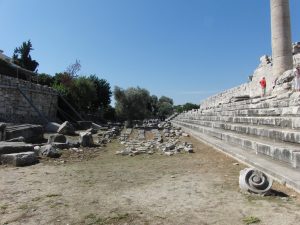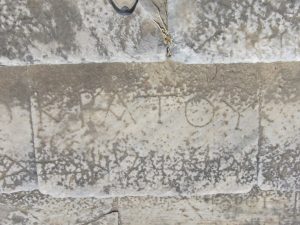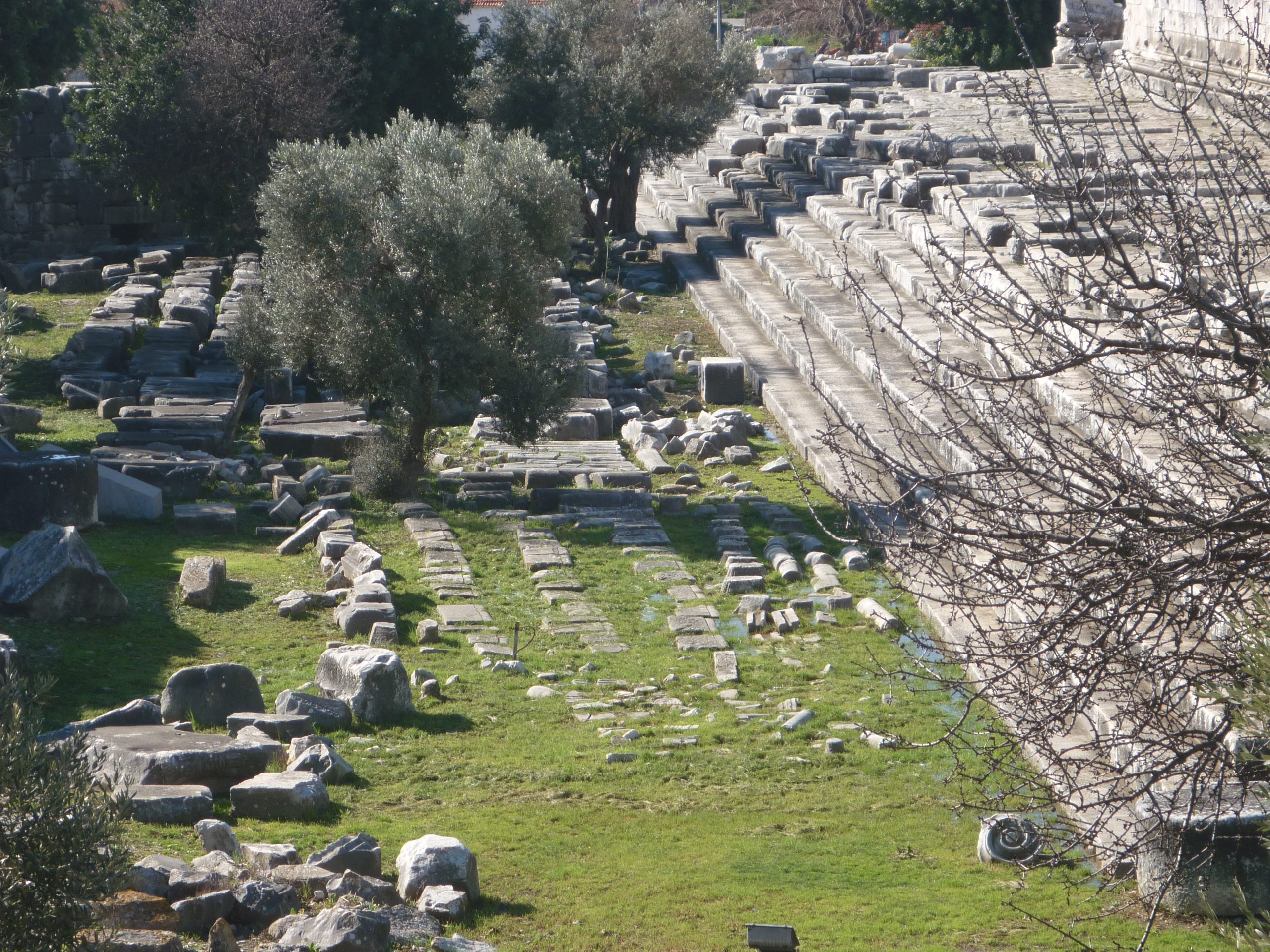Glenn Maffia
AS in all ancient Greek and Roman places of dense population an area for physical sporting prowess was a prominent feature. And Didyma was an area containing a throng of humanity during the time of the festival in honour of Apollo.
Where dreams are made: The site of the Stadium was, and remains, immediately to the left of the Temple as we look upon it facing the impressive entrance and proceeds to continue along the entire length of the south-east periphery to which it is aligned.
The seating areas for the spectators of the games were the steps along the south-east façade of the Temple, whilst another set, today mainly ruined, rose upon the other side of the track.

If one searches carefully one can still observe the etched names of attendees cut into the tall steps. These must have been the leading personages of Miletus to have had such a ‘season ticket’ position reserved.
One can still see the positions of the race’s starting posts to this very day.
The games would have been an integral part of the festival to Apollo in providing entertainment for the crowds, along with the Theatre which would have featured not only plays but poetry and oratory competitions.
The Games of Ionia: As for the festival itself there are conflicting reports of its frequency; some commentators infer that it was an annual event, whereas others state quite clearly that it occurred every four years.
It is here we must remember the festival had a prolonged existence which dated back to the initial temple in c.8th century BCE (Pausanius argues the 10th century BCE).

Within such a timeframe it would be logical to consider the four year cycle to be expedient in a practical nature, especially during the early years of settlement.
Whereas as the cities of Achaean (Greek) Ionia became more affluent, and once eventually under Roman influence, the yearly cycle could be explained.
The twelve city states formed by the Achaeans along this coastline consisted of Miletus, Priene, Myus and Samos in the south, Ephesus, Colophon, Teos and Lebedus in the central region and Erythrae, Clazomenae, Phocaea, and Chios in the north.
These cities formed themselves into the Panionion League for self protection in a hostile frontier.
Miletus was generally the most wealthy and important city in the alliance, at least until the Romans made Ephesus their capital of ‘Asia Minor’.
Workout for the Gym: Though as the stadium is well defined and attested the logical question would be to ask is where’s the Gymnasium?

The place for training for athletic events was always situated close to the ‘field of battle’ during the Greek period, though over the 1,200 years of transformation into the Roman period the Gymnasium was closely associated with the Roman Baths.
We can still see this today, in Miletus, where the Faustina Baths are abutted by the Gymnasium.
We have the remnants of the Roman Baths at Didyma, but looking for what is intrinsically a flat piece of ground, perhaps surrounded by a portico, is not going to resister much upon the geo-phys detecting machines.
Nevertheless, I have my ideas. Naturally, these will never be realized whilst some Greek peasant village remains crumbling over this fascinating archaeological site.
